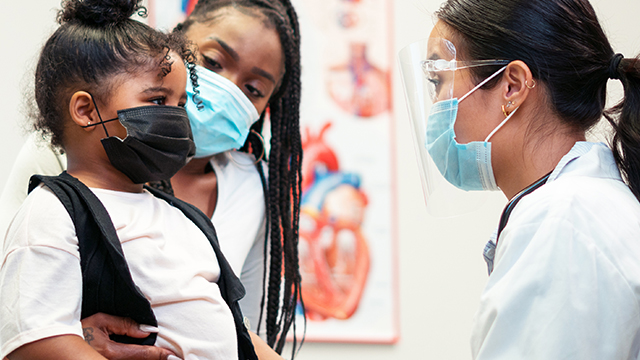
Improving the Rare Disease diagnosis journey with Azure Health Bot
 During the pandemic, we have seen dramatic shifts in technology usage: rapid acceleration of at-home shopping, a transition from in-person to online learning, and much more. In healthcare, telehealth visits have jumped more than 150 percent.i This increase of visits occurred over a three-month period and coincided with protocols shifting, physicians and patients gaining comfort with virtual visits, and the realignment of financial payments. For those with sufficient communications infrastructure, technologies like telehealth can provide more convenient, comfortable, and less costly access to healthcare. Even so, telehealth may still rely heavily on a connection to a specific practice or provider, and therefore is subject to the demands on the already short supply of physicians.
During the pandemic, we have seen dramatic shifts in technology usage: rapid acceleration of at-home shopping, a transition from in-person to online learning, and much more. In healthcare, telehealth visits have jumped more than 150 percent.i This increase of visits occurred over a three-month period and coincided with protocols shifting, physicians and patients gaining comfort with virtual visits, and the realignment of financial payments. For those with sufficient communications infrastructure, technologies like telehealth can provide more convenient, comfortable, and less costly access to healthcare. Even so, telehealth may still rely heavily on a connection to a specific practice or provider, and therefore is subject to the demands on the already short supply of physicians.
Artificial intelligence, or AI, when applied appropriately and implemented ethically, can be used to effectively scale healthcare where physical or human limitations have previously created barriers and to improve health equity. As such, in 2020, Microsoft released the Azure Health Bot to empower developers in healthcare organizations to build and deploy AI-powered, conversational healthcare experiences that offer its users intelligent and personalized access to health-related information and interactions. Users can interact via text or voice because experiences powered by the Azure Health Bot can better understand user intent through use of natural language processing, or NLP, and AI technologies. Azure Health Bot helps transform the personal experience while supporting critical data security and privacy requirements like HIPAA. The Health Bot provides healthcare organizations the opportunity to scale traditional service-oriented interactions more effectively and efficiently, and ultimately to improve care delivery.
Previously, we’ve discussed the use of the Azure Health Bot by national health agencies like the CDC and NHS, as well as with clinical resource organizations such as PRA Health Sciences for COVID-19. Now, we are pleased to highlight the Global Commission’s development and launch of RareNavigator, a tool that provides caregivers and families with customized resources to get answers about their child’s health and explore the possibility of a rare disease through a conversational experience powered by the Azure Health Bot. By using features native in the Azure Health Bot, RareNavigator can conversationally guide parents or caregivers through a series of questions and interpret responses to provide tailored resources. These resources include access to local, relevant groups based on the patient’s geographic area, or tracking tools used to monitor the child’s health. RareNavigator is now piloting in the San Diego area. Additional sites in Ireland and Australia will be piloted later in 2021, increasing both the reach and impact of RareNavigator to empower parents and caregivers to understand how to best to engage with health care providers – the first step on the path to a quicker diagnosis.
RareNavigator was developed by the Global Commission to End the Diagnostic Odyssey for Children with a Rare Disease. More than 300 million people globally are living with a rare disease. While collectively this number is large, there are known to be at least 7,000ii rare diseases of which approximately 80 percent have known genetic origins and 50 percent of patients are children.iii The challenges of being diagnosed with a rare disease can be significant: An average rare disease patient consults with 5 doctors and may take 5 to 8 years to receive an accurate diagnosis; many receive misdiagnosis or incomplete information.iv
Obtaining a timely, accurate rare disease diagnosis is challenging. No single strategy will suffice. With RareNavigator, the Global Commission has taken a step forward in leveraging technology with an aim to extend resources and customized guidance to patients and caregivers to empower them to have informed discussions with physicians, and ultimately help shorten the time to diagnosis for their child. Continued application of novel technologies can help to address core challenges in healthcare, including access, equity, and quality.
About:
The Global Commission to End the Diagnostic Odyssey for Children with a Rare Disease was formed in 2018 in collaboration with Takeda, Microsoft, and EURORDIS-Rare Diseases Europe. The Global Commission brings together representatives from multiple sectors to provide diverse perspectives on rare disease diagnostics. Its vision is a clear path to a timely, accurate diagnosis for children around the world, aiming to harness the power of technology and advances in genetics to accelerate the time to diagnose a rare disease, empowering parents, and caregivers, and advocating for local and global policy change to support an enabling environment.
i Koonin LM, Hoots B, Tsang CA, et al. Trends in the Use of Telehealth During the Emergence of the COVID-19 Pandemic — United States, January–March 2020. MMWR Morb Mortal Wkly Rep 2020;69:1595–1599. DOI: http://dx.doi.org/10.15585/mmwr.mm6943a3
ii “Rare diseases.” National Institutes of Health (NIH), 11 Feb. 2020, www.nih.gov/about-nih/what-we-do/nih-turning-discovery-into-health/rare-diseases.
iii Nguengang Wakap, S., Lambert, D.M., Olry, A. et al. Estimating cumulative point prevalence of rare diseases: analysis of the Orphanet database. Eur J Hum Genet 28, 165–173 (2020). https://doi.org/10.1038/s41431-019-0508-0
iv The National Alliance for people with rare diseases & all who support them. Rare Disease UK, January 2016. https://www.raredisease.org.uk/media/1588/the-rare-reality-an-insight-into-the-patient-and-family-experience-of-rare-disease.pdf.




